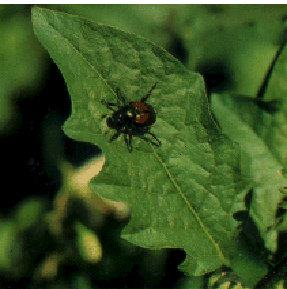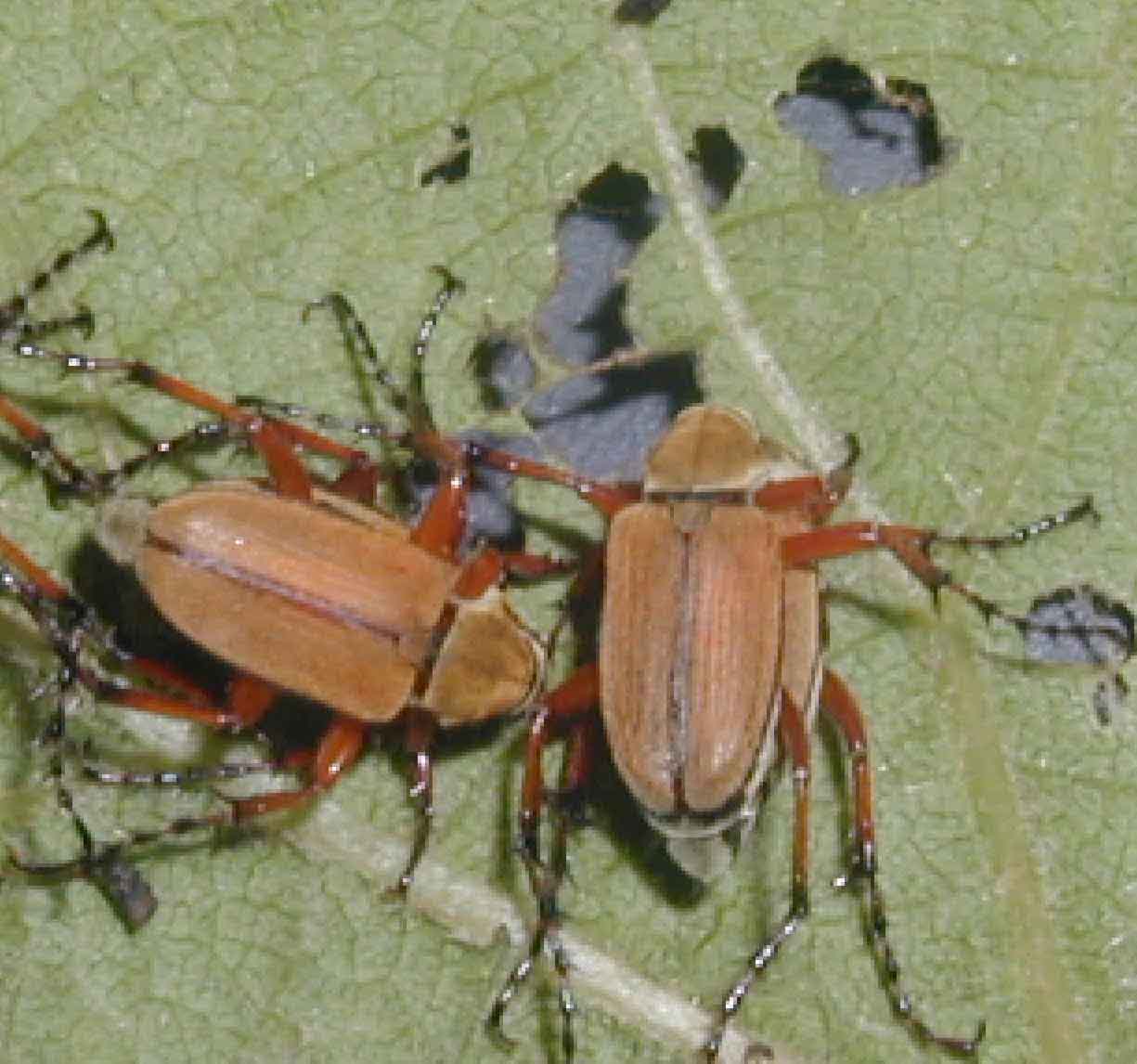nafex@lists.ibiblio.org
Subject: North American Fruit Explorers mailing list at ibiblio
List archive
- From: <dmnorton@royaloakfarmorchard.com>
- To: "North American Fruit Explorers" <nafex@lists.ibiblio.org>
- Subject: Re: [NAFEX] Japanese beetle or Rose Chafer?
- Date: Sat, 23 Jun 2007 17:53:01 -0500
Title: Message
|
Here's the best profile of both that I have
used. It comes from http://www.ipmcenters.org/cropprofiles/docs/MIlabruscagrapes.html.
Sorry I couldn't get to it sooner when Jim asked about the same
pests. We use Imidan for both since Surround will work on Japanese
Beetle but not on chafers. Hope this helps!
Japanese Beetle
Life Cycle: Japanese beetles begin to emerge in early July and can be found through September. Beetles leave their tunnels during the morning of clear days for feeding and mating. They return to the soil in the late afternoon or evening to spend the night and also remain in the soil on cold wet days. The beetles lay their eggs underground in grassy areas in mid summer. The eggs hatch in late July and the larvae go through three molts before fall. They are less than 1/15 of an inch long when they first hatch and may be as large as 1 inch at third stage larvae. The white, C-shaped larvae (grubs) feed on grass and weed roots and overwinter further underground in these areas. Grubs move up into the root zone during April and May to feed and reach maturity (5, 42). Damage: Adults feed on the upper surface of the foliage between the veins, leaving a lace-like skeleton. Leaves turn brown and die if feeding is severe, but berry clusters are not attacked. Japanese beetles can be a problem particularly in new vineyards using grow tubes (5, 42). General Control Information: Labrusca vines are naturally resistant to feeding by Japanese beetles and tolerate some damage, but vinifera vines and hybrids are more susceptible. Monitoring is required to reduce the risk of damage. Traps are not recommended because they attract more beetles to the vineyard. Birds and mammals reduce Japanese beetle grub populations considerably by feeding on large numbers of grubs during the early spring and fall. Chemical controls include: Imidan, Sevin, Danitol and Surround (24). Rose Chafer
This general feeder is related to the Japanese beetle, sharing a similar life cycle (6). Life Cycle: Larvae (grubs) overwinter in the soil, resuming development in the spring. Adult beetles emerge in late May or early June, near the time of grape bloom and live for 3- to 4 weeks. They are about 0.5 inch long with a tan body, dark brown head and long legs. Males and females congregate on plants to mate and feed on blossoms, newly set fruit and leaves. Mating and egg-laying occur continuously for about two weeks with each female depositing eggs just below the surface of sandy soil. In about two weeks, eggs hatch and the grubs remain in the soil until they pupate in the spring. This pest is more common in areas with light sandy soils. There is only one generation per year (6). Damage: Rose chafers feed on green tissue. Feeding damage is most obvious on the leaves though the greatest impact can be on young clusters when adult beetles remove the developing berries (42). General Control Information: Vigilance must be maintained early in the season in case of high rose chafer populations. In severe cases, blossom buds are completely destroyed, resulting in little or no grape production. Bloom-time sprays for grape berry moth will control rose chafers (6). Chemical controls include: Guthion, Imidan, Lannate, Sevin, and Danitol (24). Dennis Norton
Royal Oak Farm Orchard http://www.royaloakfarmorchard.com http://www.theorchardkeeper.blogspot.com http://www.revivalhymn.com
|
-
Re: [NAFEX] off topic: roses,
drosehngs1@juno.com, 06/16/2007
- Re: [NAFEX] off topic: roses, V. Michael Bove, Jr., 06/16/2007
-
Re: [NAFEX] off topic: roses,
Brungardt, Sam, 06/18/2007
-
Re: [NAFEX] Japanese beetle or Rose Chafer?,
loneroc, 06/23/2007
- Re: [NAFEX] Japanese beetle or Rose Chafer?, dmnorton, 06/23/2007
- Re: [NAFEX] off topic: roses, loneroc, 06/23/2007
-
Re: [NAFEX] Japanese beetle or Rose Chafer?,
loneroc, 06/23/2007
- <Possible follow-up(s)>
- Re: [NAFEX] off topic: roses, drosehngs1@juno.com, 06/16/2007
- Re: [NAFEX] off topic: roses, drosehngs1@juno.com, 06/18/2007
-
Re: [NAFEX] off topic: roses,
Anton Callaway, 06/20/2007
- Re: [NAFEX] off topic: roses, Donna &/or Kieran, 06/20/2007
- Re: [NAFEX] off topic: roses, drosehngs1@juno.com, 06/20/2007
Archive powered by MHonArc 2.6.24.

